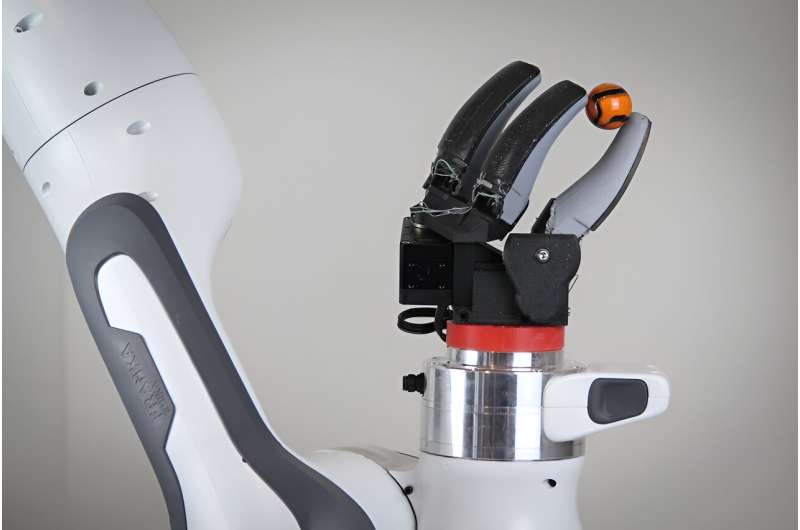Although every human being has their own priorities, one thing we all have committed quite strongly to is the prospect of improving at a consistent clip. This unwavering commitment, in particular, has brought the world …
Although every human being has their own priorities, one thing we all have committed quite strongly to is the prospect of improving at a consistent clip. This unwavering commitment, in particular, has brought the world some huge milestones, with technology emerging as quite a major member of the group. The reason why we hold technology in such a high regard is, by and large, predicated upon its skill-set, which guided us towards a reality that nobody could have ever imagined otherwise. Nevertheless, if we look beyond the surface for one hot second, it will become clear how the whole runner was also very much inspired from the way we applied those skills across a real world environment. The latter component, in fact, did a lot to give the creation a spectrum-wide presence, and as a result, initiated a full-blown tech revolution. Of course, the next thing this revolution did was to scale up the human experience through some outright unique avenues, but even after achieving a feat so notable, technology will somehow continue to bring forth the right goods. The same has turned more and more evident in recent times, and assuming one new discovery ends up with the desired impact, it will only put that trend on a higher pedestal moving forward.
The researching team at Massachusetts Institute of Technology has successfully developed a camera-based touch sensor, which is meant to use its human finger-like shape for the purpose of providing robots high-resolution tactile sensing over a larger area. Named as GelSight Svelte, the sensor essentially banks upon two mirrors to reflect and refract light so that one camera, located in the base of the sensor, can see along the entire finger’s length. Now, in order to understand the significance such a mechanism, we must start by acknowledging how tactile sensors currently in use are actually pretty small and flat. Given their miniscule size, they are often located in the fingertips, meaning the robots bearing these sensors can only use their fingertips to grasp an object. This, like anyone can guess, limits the amount of manipulation tasks they can perform. Enter GelSight Svelte. The sensor in question, alongside two mirrors, is given a given a camera and two sets of LEDs for illumination, LEDs that are attached to a plastic backbone and encased in a flexible skin made from silicone gel. The camera is there to observe where contact occurs and measure the geometry of the object’s contact surface. As for the LEDs, they give a sense of how deeply the gel is being pressed down when an object is grasped, and they do so using saturation of color at different locations on the sensor. Once all the saturation information is in, it becomes possible to reconstruct a 3D depth image of the object being grasped.
“Because our new sensor is human finger-shaped, we can use it to do different types of grasps for different tasks, instead of using pinch grasps for everything. There’s only so much you can do with a parallel jaw gripper. Our sensor really opens up some new possibilities on different manipulation tasks we could do with robots,” says Alan (Jialiang) Zhao, a mechanical engineering graduate student and lead author of a paper on GelSight Svelte.
One detail we need to discuss a bit more extensively is how the researchers built their finger-shaped sensor with a flexible plastic backbone. The stated backbone has a major role to play here, considering it would allow us to determine proprioceptive information, such as the twisting torques applied to the finger. This it does on the back of a bending and flexing motion which is generated whenever an object is grasped. Complimenting these backbone deformations is a machine learning setup which helps in estimating how much force is being applied to the sensor.
Following the development, the researching team tested their sensor by pressing objects, like a screw, across different locations on the sensor to check image clarity, as well as see how well it could determine the shape of the object. Going by the available details, the results they got from it were encouraging. Furthermore, they roped in three sensors to build a GelSight Svelte hand which can perform multiple grasps, including a pinch grasp, lateral pinch grasp, and a power grasp that uses the entire sensing area of the three fingers. Here, they were able to confirm that a three-finger power grasp allows a robotic hand to hold a heavier object more stably.
“Optical-tactile finger sensors allow robots to use inexpensive cameras to collect high-resolution images of surface contact, and by observing the deformation of a flexible surface the robot estimates the contact shape and forces applied. This work represents an advancement on the GelSight finger design, with improvements in full-finger coverage and the ability to approximate bending deflection torques using image differences and machine learning,” said Monroe Kennedy III, assistant professor of mechanical engineering at Stanford University, who was not involved with this research.
For the immediate future, the researchers plan on enhancing GelSight Svelte so to make sure the sensor is articulated and can bend at the joints like a human finger.




